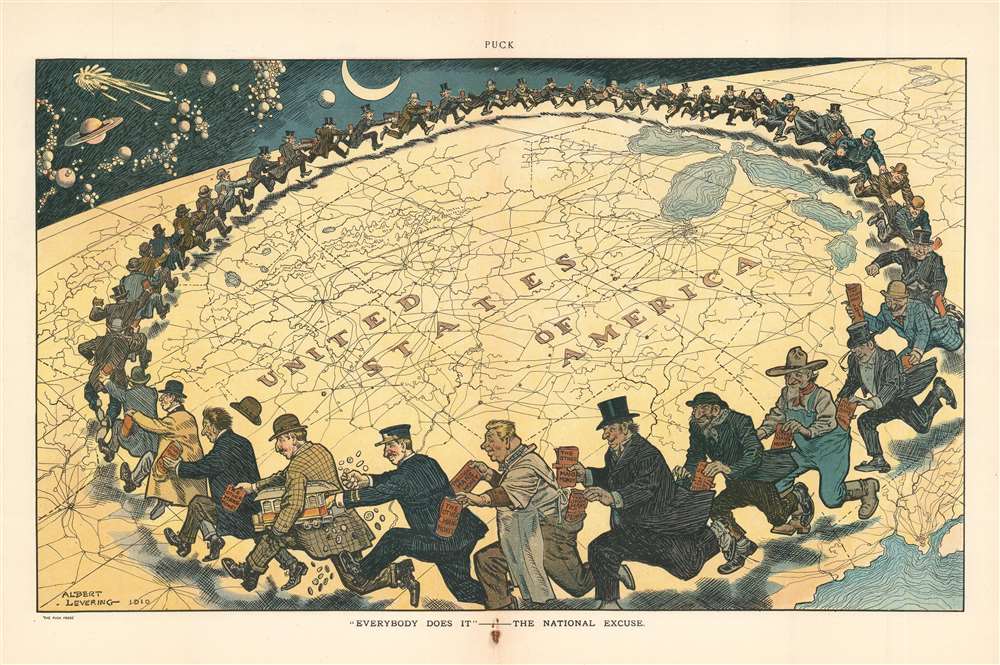This item has been sold, but you can get on the Waitlist to be notified if another example becomes available, or purchase a digital scan.
1910 Levering and Puck Magazine Political Cartoon of Corruption in America
EverybodyDoesIt-levering-1910
Title
1910 (dated) 12.5 x 19.5 in (31.75 x 49.53 cm)
Description
Chromolithography
Chromolithography is a color lithographic technique developed in the mid-19th century. The process involved using multiple lithographic stones, one for each color, to yield a rich composite effect. Oftentimes, the process would start with a black basecoat upon which subsequent colors were layered. Some chromolithographs used 30 or more separate lithographic stones to achieve the desired effect. Chromolithograph color could also be effectively blended for even more dramatic results. The process became extremely popular in the late 19th and early 20th centuries, when it emerged as the dominate method of color printing. The vivid color chromolithography produced made it exceptionally effective for advertising and propaganda imagery.Publication History and Census
This cartoon was created by Albert Levering and published in the February 23, 1910 issue of Puck. One example is listed at the Library of Congress, but this piece is not catalogued in OCLC.Cartographer
Albert Levering (1869 - April 14, 1929) was an American architect and cartoonist. Born in Hope, Indiana, Levering's father was an architect, who moved the family to Kansas City, Missouri, in 1882. Levering appears to have learned architecture from his father, Levi Levering, and worked with his father's firm from from 1887 until at least 1894, when he moved to Minneapolis in 1894. By 1895, Levering was a staff artist for the Minneapolis Journal and was studying with Burt Harwood. He moved to Chicago, Illinois, in 1896 and began working for the Chicago Tribune as an artist. Apparently, Levering chose not to stay in Chicago very long, because obituaries state that he moved to New York City in 1896. Sometime in the late 1890s, Levering spent two years studying art at the National Academy in Munich, Germany, and was back in New York by 1900, per the 1900 U.S. Census. That year he contributed work to Harper's Monthly Magazine, and Harper's Weekly. During his career, Levering also worked on the staff at Puck and Life, and illustrated several book, some of which included Grimm Tales Made Gay, Mollie and the Unwiseman, and Alice in Blunderland. Levering married Frances Jewell Youngling on May 31, 1905. More by this mapmaker...

